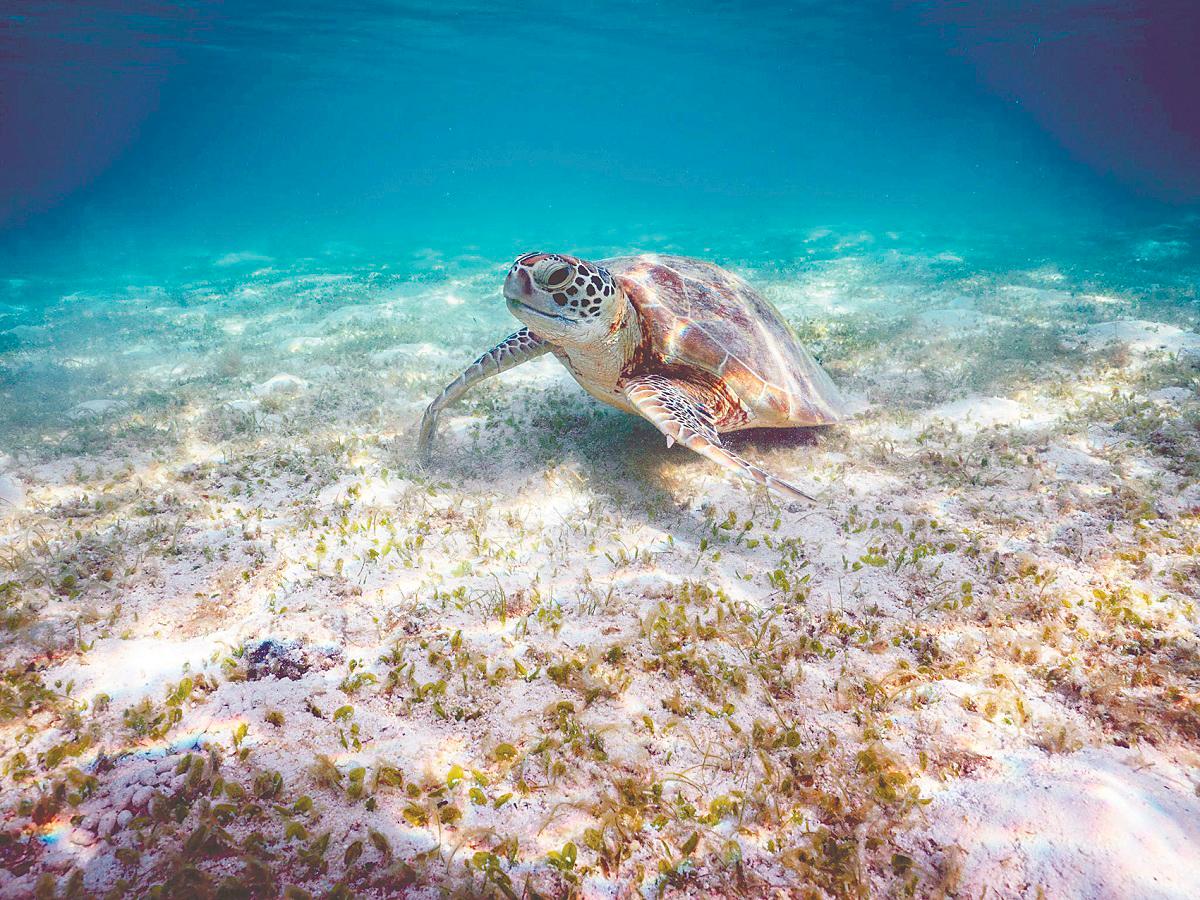UNDER a moonlit sky, close to midnight on Aug 13, 2022, the soft whispers of waves greeted a nesting marine turtle. She was a green turtle, one listed as “endangered” by the IUCN (International Union for Conservation of Nature) Red List of Threatened Species.
Pok Jamil, one of our dedicated local turtle guardians, watched as she emerged from the sea, dragging her heavy shell onto the sands of Telaga Papan Beach in Setiu, Terengganu.
Her turtle tag read “MY(TGG)1030” – MY for Malaysia, TGG for Terengganu and 1030 was her unique identification code. But for this story, we’ll call her Melur.
She was born on this beach and has now returned to give birth to the next generation. With great care, she dug a nest and laid 70 precious eggs – each one a fragile promise of new life.
Due to the stringent monitoring efforts of our turtle guardians, every single egg was protected and brought back to the hatchery, giving them the best chance to hatch safely.
In time, 66 out of 70 turtle eggs hatched – a remarkable 94% hatch success rate. Melur’s tiny hatchlings emerged, scurrying on the sandy beach, guided by the horizon and waves, embarking on their perilous journey into the deep ocean.
Unbeknown to Pok Jamil, Melur had been here almost exactly four years earlier. On Aug 2, 2018, she had nested on this same beach, laying 68 eggs. Of those, 61 hatchlings had made it to the sea. Safe to say Melur is a resilient and devoted mother turtle, but her return is not always guaranteed.
Perilous path
Melur’s nesting activities are not only testaments to the resilience of marine turtles but also a reminder of the immense threats they face. Turtle poaching, egg harvesting and unsustainable coastal development continue to endanger these ancient mariners.
Poachers seek turtle eggs for sale and consumption, disrupting an already fragile life cycle. Without protection, countless eggs would be lost, diminishing the number of turtles that might one day return to nest.
This is why nesting monitoring is crucial. By safeguarding nests, we prevent poaching and give hatchlings the highest chance of survival. Climate change also poses a growing threat – rising sand temperatures can skew the sex ratio of hatchlings, leading to fewer males and making it harder for marine turtles to breed in the future.
To counter this, the hatchery’s temperature is monitored to facilitate a balanced development for future marine turtle populations.
Importance of tagging
Marine turtles like Melur are highly migratory, often travelling thousands of kilometers across oceans. By tagging nesting mothers, we gain critical insight into their lives.
These records help conservationists track their return journeys and, in the unfortunate event of poaching or accidental capture in foreign waters, they help identify affected populations.
Melur’s return to Telaga Papan is not just a personal journey – it is a beacon of hope. But the question remains: Can she and future generations continue to find sanctuary on this nesting beach?
Future of turtles
Coastal erosion, spurred by climate change and human activity, threatens nesting beaches like Telaga Papan. Development along coastlines, pollution and unsustainable tourism further disrupt nesting activities.
Plastic pollution poses an additional silent killer – entangling newborn turtles or disrupting turtle nesting. WWF-Malaysia, alongside the Department of Fisheries Terengganu and our dedicated turtle guardians like Pok Jamil, work tirelessly to combat these threats.
Through nesting monitoring and coastal rehabilitation efforts – such as planting native vegetation for shading, beach profiling to monitor erosion and advocating stronger habitat protections – we strive to ensure that nesting beaches remain safe havens for generations of turtles to come.
Mother turtle’s legacy and our role
A mother turtle lays countless eggs in her lifetime, yet only one in a thousand hatchlings will survive to adulthood and return to nest.
Each egg, each hatchling and each nesting mother is precious. As we celebrate Mother’s Day on Sunday, let us remember the odyssey of turtle mothers, like Melur, who against all odds, return to continue the cycle of life. But they cannot do it alone. We must stand as their guardians.
Here is how you can help:
Never consume turtle meat or eggs.
Keep beaches clean – do not litter.
Avoid visiting nesting beaches at night to prevent disturbing nesting mothers.
Support conservation efforts and responsible ecotourism.
Report to the Fisheries Department if you witness marine turtle poaching or stranding: Call 03-8870 4058.
Melur has nested twice between 2018 and 2022. Perhaps in 2026 or 2027, she will return once more. With the unwavering efforts of turtle guardians and your support, we can continue to welcome and protect these remarkable mothers.
As we honour mothers everywhere, let us also safeguard our mother turtles. Together, we can nurture a future where marine turtles continue to thrive alongside humankind, just as generations of mothers have before us.
This article is contributed by the Marine Programme, WWF-Malaysia. Its mission is to stop the degradation of the earth’s natural environment and to build a future in which humans live in harmony with nature. Comments: letters@thesundaily.com









